MANIFESTO

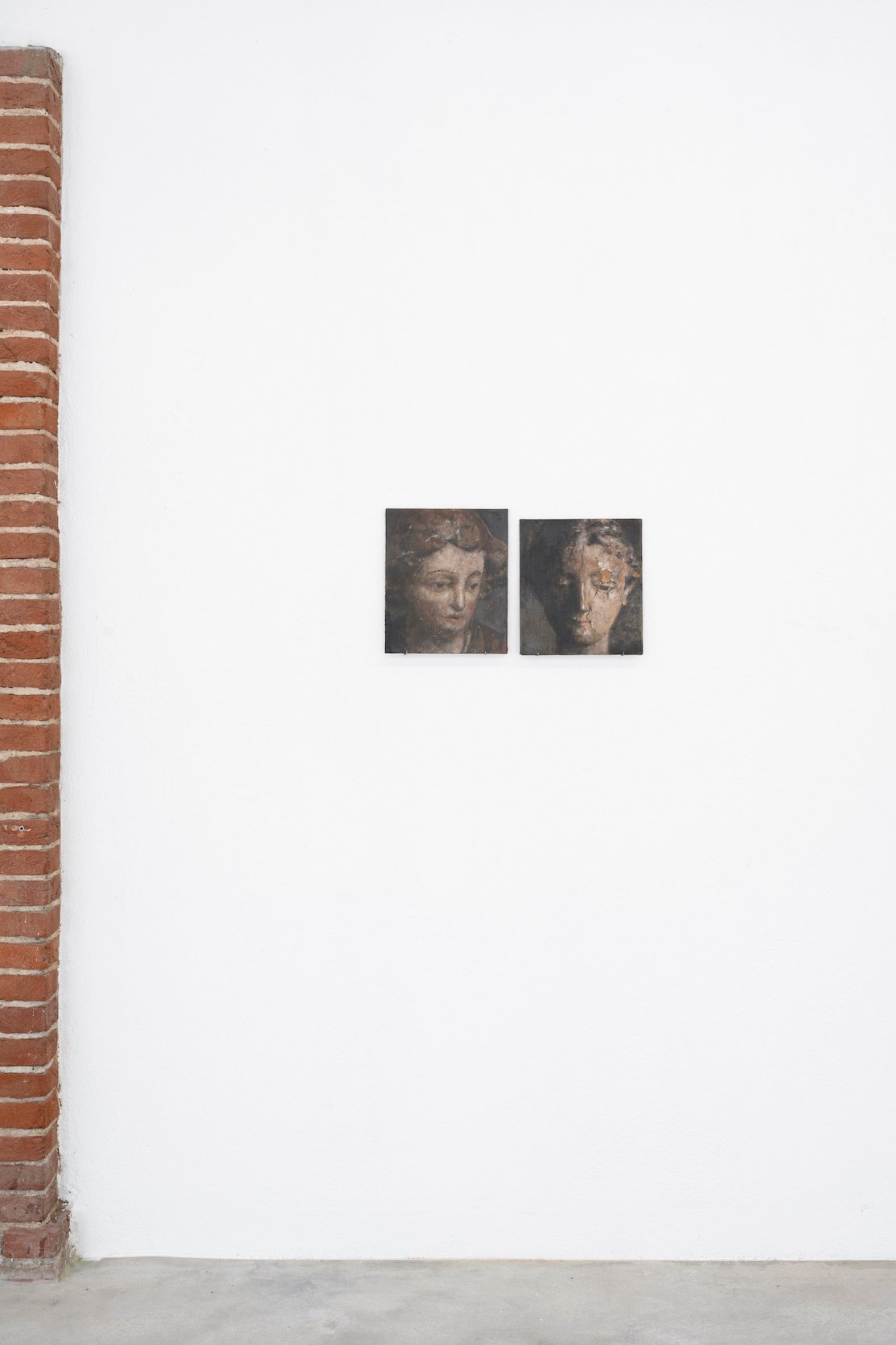
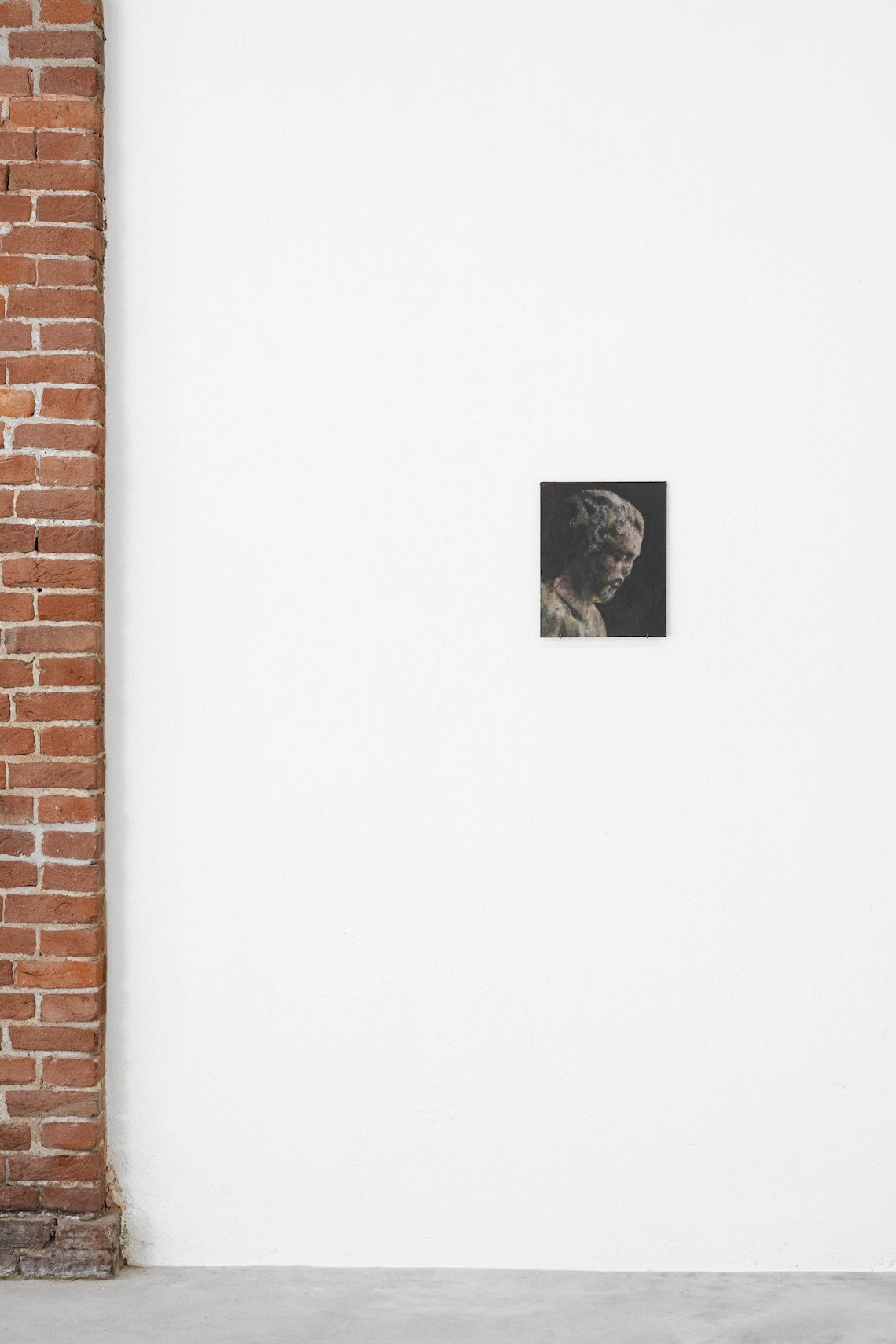
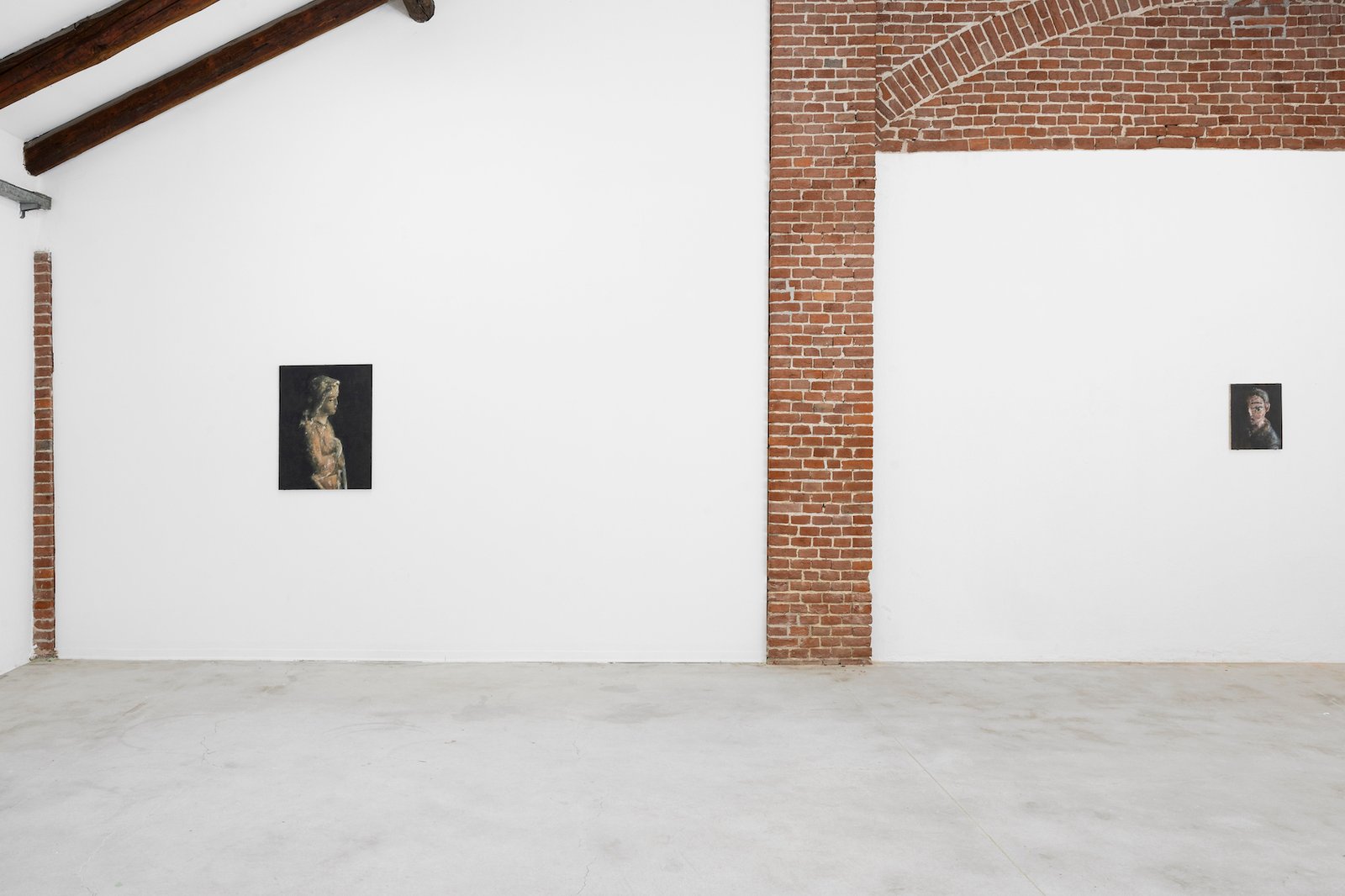
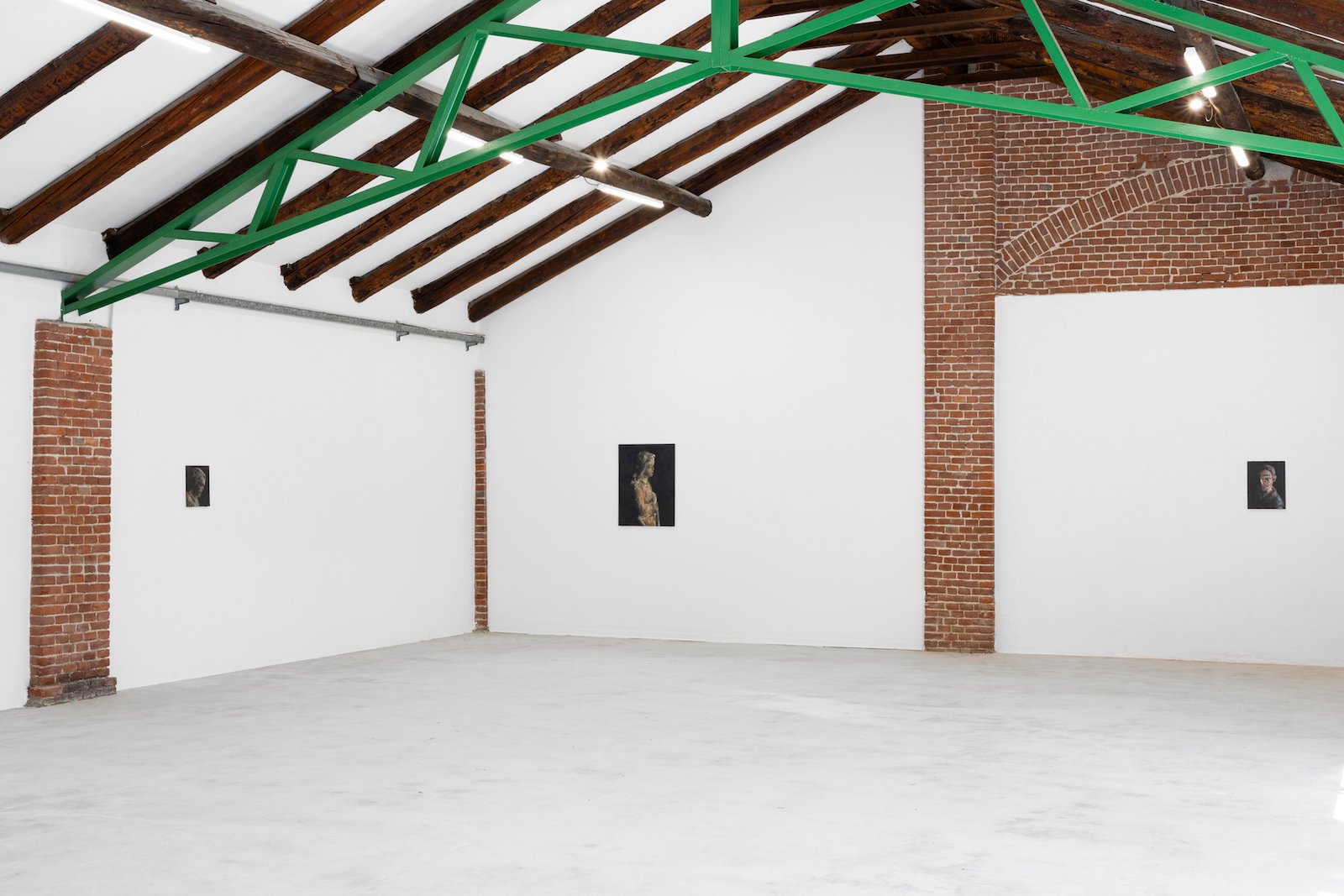
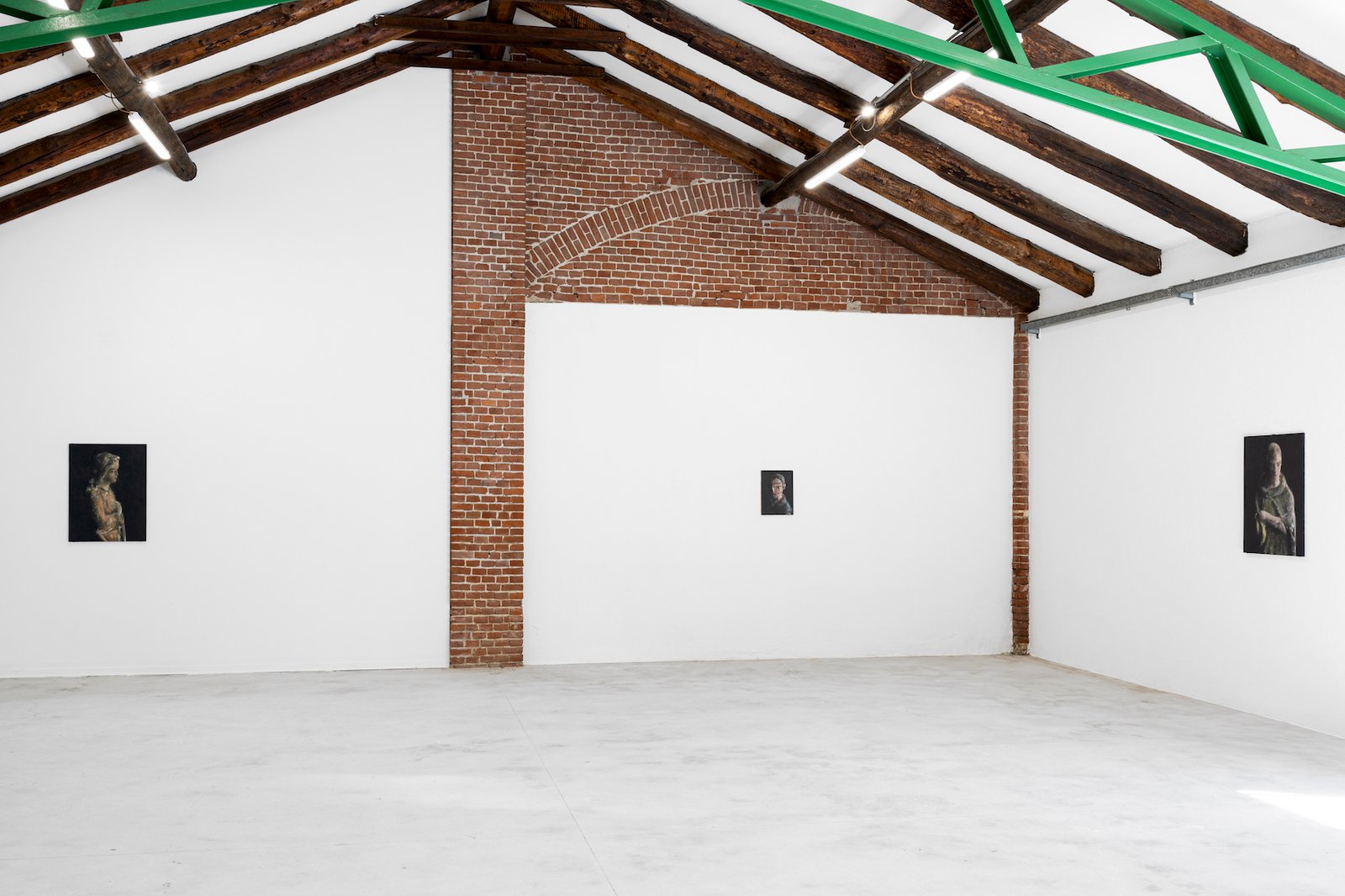
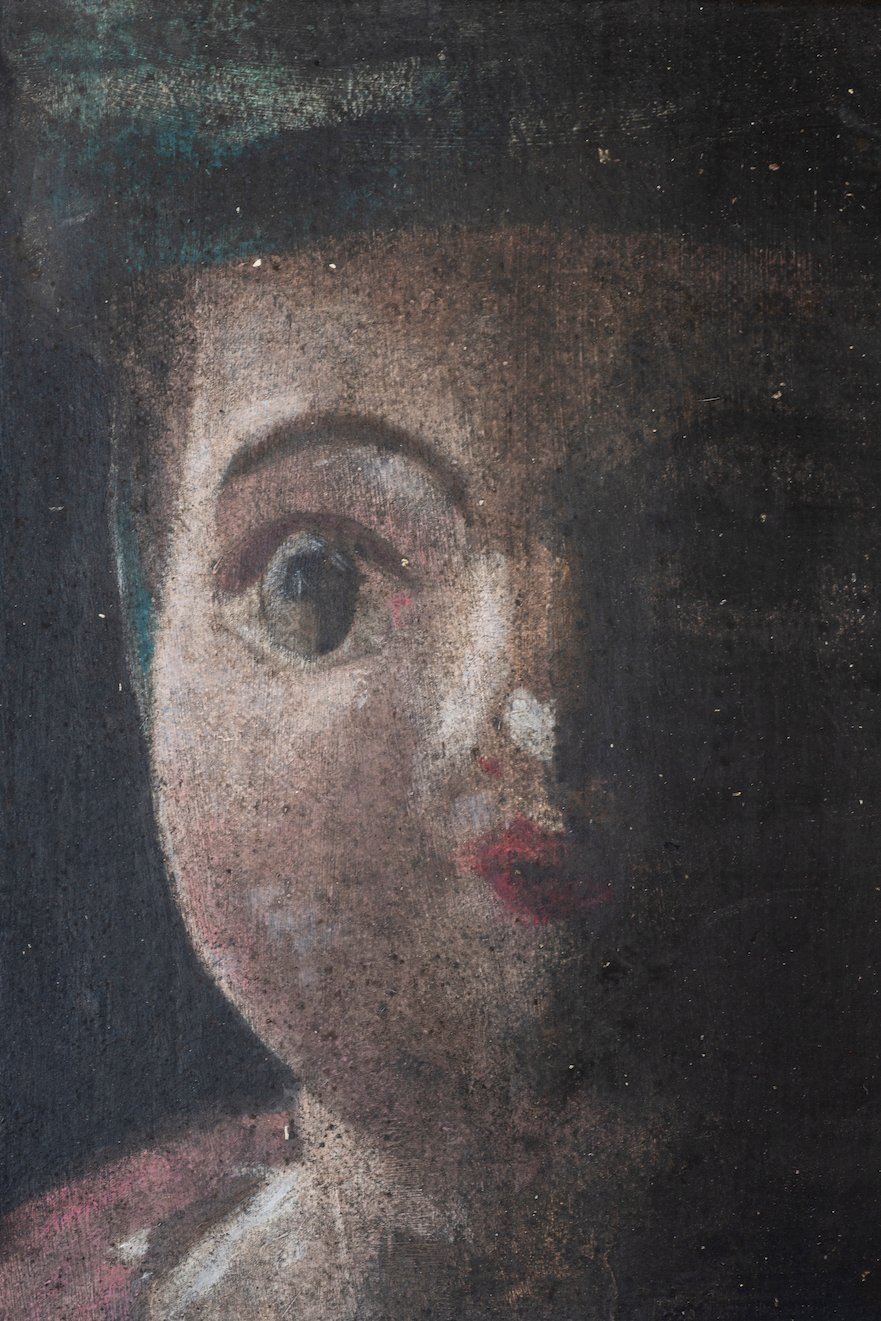
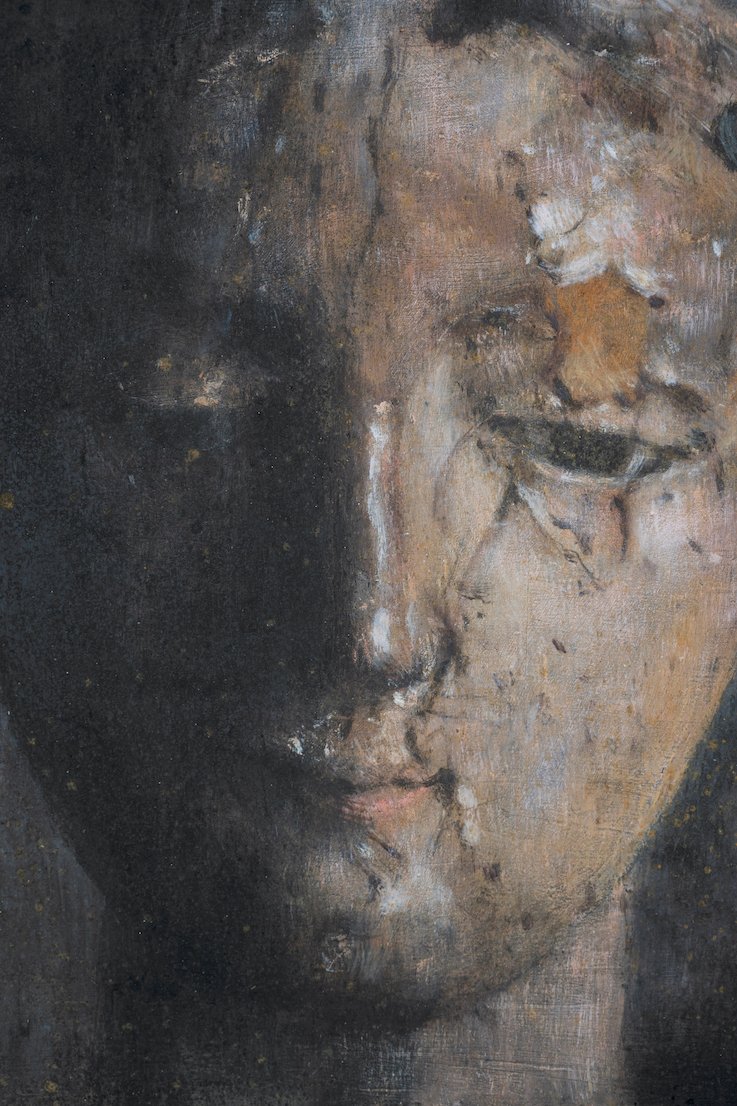
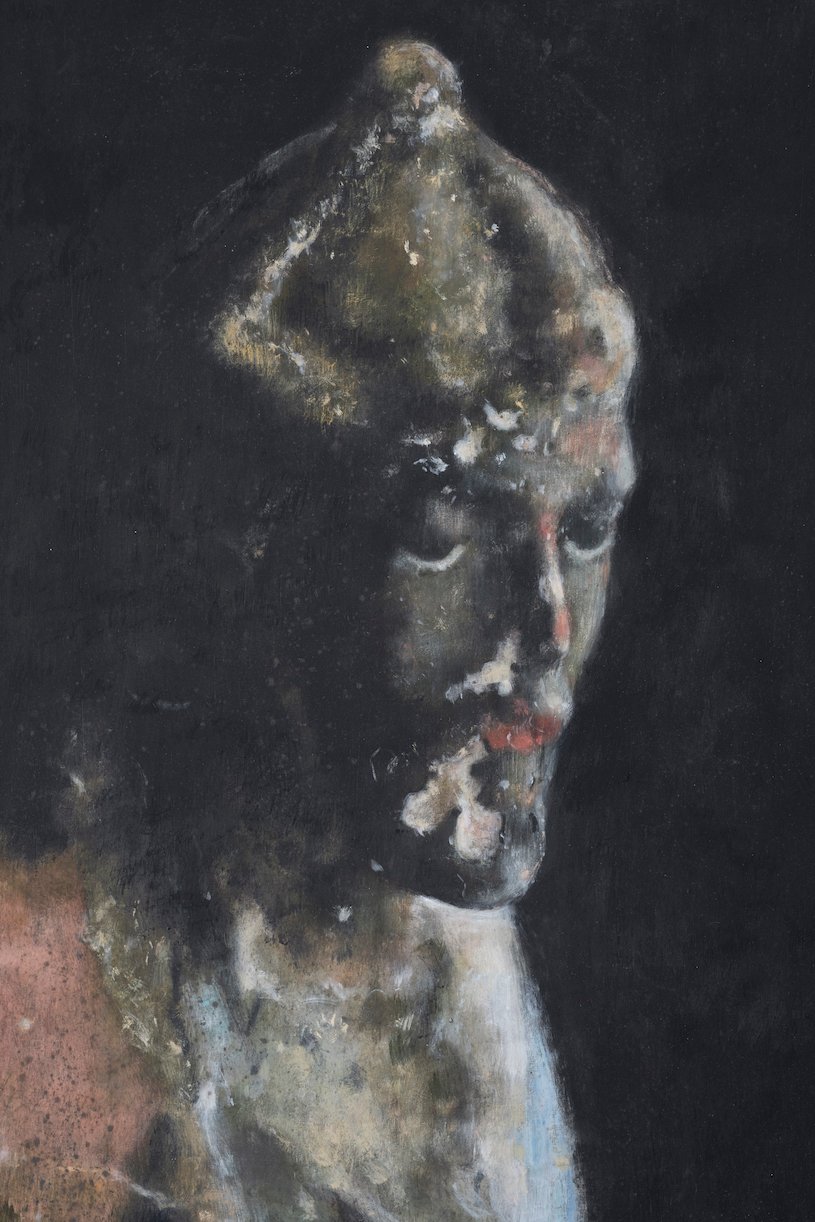
ENRICO TEALDI
MANIFESTO
Critic text by Davide Ferri
That afternoon the journey from Turin to Cuneo’s countryside, where Enrico Tealdi lives, took a little longer than expected. Suddenly it started to rain and as it got harder and harder, a hailstorm began making it impossible not to slow down abruptly. Cars halted in the emergency lane waiting for it to pass, which got me thinking about the way in which human presence was thinning out as I got closer to Enrico’s studio. Furthermore, the landscape’s green seemed different to me. It wasmore exuberant and intense, but gloomy, nonetheless. A quality I find in some of his most recent landscape paintings, where different shades of liquid and unstable green seem to expand until the disappearance of any trace of figure (if I were not afraid of exaggeration, I would say that the expansion on the surface of these shades of green make the painting veer towards monochrome). Eroding the surface from within, the range of greens conquers almost entirely the surface, dematerializing it, imprinting it with a layer of diaphanousness and immateriality. Nevertheless, this green conquer seems to stop just to allow a hem of sky to resist as a visual testimony in the form of a cloud, or, on the ground, as a plinth, as a statue, as some ancient garden ruins: small epiphanies of the landscape, signs and shreds of a memory which seems to only belong there.
Without a doubt Tealdi’s work has to do with memory.
I like to think that it is also about a personal memory. Memories of a child who explores the landscape of the countryside where he lives. The abandoned houses and uninhabited places – old aristocratic villas with parks and, indeed, remains of statues. A child who spends hours observingthrough closed gates. Who, in the matter of seconds remains indelibly captured by the image of a cracked Madonna while driving past a votive shrine with his father. Tealdi’s studio, carved out of the family’s farmhouse barn, seems to mend the time between childhood and adulthood, between childhood and painting. In front of the furniture, under the chandeliers, around the objects that have belonged to the family for generations, upon the painting tools, time seems to stop.
And here lies the first problem: Tealdi is one of those painters who seems to be moving on, moving forward, while his eyes are fixed to the rear-view mirror, to a far away or recent past. I know others (Michele Tocca, for example, who cultivates the ideality of eighteenth- and nineteenth-century itinerant painters, of Grand Tour painters, who painted live; Nicola Samorì, whose paintings recreate – only to then destroy them – images that belong to a dark and misty Baroque) and they are among my favorites. But precisely because we know that there is an irrepressible self-referential side to painting, to what extent shall we accept this retrospective gaze? What strategies do these painters, and an artist like Tealdi, employ to break out of this self-referentiality cage bringing their work back into the present? What does it mean to bring a work back into the present? What does “present” means? And, isn’t this trajectory, this re-emergence (when it happens but also when it is only intended) one of the most suggestive aspects of this kind of work?
Figures, in the sense of bodies and people almost never appear in Tealdi’s paintings. When they do appear, they are, as I said, ruins and statues; or, in a less recent series, deserted and abandoned goals or lines of football fields whose elements and signs the landscape has absorbed and integrated, as in Ghirri’s photographs (there’s one in particular that comes to my mind, in which the goal is a white rectangle silhouetted against the thicket of a forest, and two shades of green divide the image. Nosky in that photo).
Yet that afternoon in his studio, Tealdi showed me other paintings I was unfamiliar with: his most recent series, which is not so recent after all as he started it back in 2016, and which forms the backbone of this exhibition. This time, paintings with figures. But not really. He showed me a series of faces which derive from the enlargement of some of the plaster crèche figurines that the artist has kept since he was a child; plaster figurines of the kind you used to find in shops around Christmastime, some time ago, and that you don’t find anymore, except for those roughly made of plastic. In the middle of the studio, standing on the large worktable (worktable, because Tealdi paints horizontally) are the statuettes along with the paintings. It is a fact that in his studio it is not strange to see these things that seem to come from another time. I could then say: portraits of statues, of inanimate objects, hence still lifes. Or, even better, faces poised between portrait and still life. Saidin parenthesis: I wonder why I persist in assigning one genre or another to this series. Why do I have to give this series a name? Perhaps because there is the other part of Tealdi’s work, that I could so easily trace back to landscape? But isn’t it better to call those landscapes simply ‘green paintings’? Paintings of green that aim to expand into monochrome? And is not the face itself a landscape, the most difficult one to paint, as Cezanne once said?
The faces – to which the artist has given proper names (Ada, Lia, Dalia, Tobia and Giosia, to name but a few), names of saints, blessed women and prophets, based on hypotheses of vague resemblance with the statuettes, yet chosen with philological refinement, sounding out sacred texts – have soft features, a velvety skin, caressed by light that illuminates their sensuality. It is the skin that invites the viewer to approach these figures that painting has transformed into living presences.
The statuette’s gaze – gauzy, rapt and dreamy (as figures in the crèche they turn it downwards towards the manger) – excludes a reciprocal relationship with the viewer. It is as if Tealdi’s attempt to give life to these figures through painting pushes them in two different directions: on the one hand, the flesh, on the other, a dimension of dreamy and ecstatic otherness, something I do not know what else to call other than ‘the territory of the sacred’.
And here is the second problem with this text. Manifesto, the title of the exhibition, places one next to the other a series of sacred figures. This is no small thing. I don’t wish to dwell on this matter, but the sacred is a complicated matter. There’s a great absence of contemporaneity within the sacred, a dimension that only a few artists, white flies in today’s panorama, continue to visit in a crooked, awkward, and sometimes incidental way (among Italian painters of the latest generations, comes to mind, for example, Alessandro Pessoli, who combines in his portraits pop, naive faces with those of sacred figures – as Luca Bertolo notes in the afterword to James Elkins’s book On the Strange Place of Religion in Contemporary Art). Doesn’t one feel the thrill of a strange risk in front of the visages in Manifesto? (That must be why Enrico has kept them hidden all these years. Hekept asking himself, right up to the last moment, if instead of showing them all at once whether it would not be better to thin them out, to exhibit them among the landscapes, the ceramics, the most popular areas of his work).
The faces emerge from a sort of depth and their presence in the picture has a sculpted nature: fromthe black background (a grasping element which is apparently mobile and seems capable of releasing, reclaiming, and of swallowing again that part of the visible face); from the light (thatseems to act in contrast/synergy with the black); from the (many) dots and brushstrokes on the surface. The white strokes, now more defined, descriptive, and fleeting, punctuate the image in many places. To me they seem to have an ambiguous role: when more mimetic, they indicate areference (the statuettes and the material they are made of –plaster, a cracked, chipped, broken material), and when more indefinite, they are simple spots and brushstrokes fluttering across the surface.
Within these faces so much speaks of materiality. The visage which is flesh and living presence. The black and the light that seem to release and enclose their presence. The stains that lead back to the referent: the plaster statuettes from which the face comes from. But there is more: there is the way Tealdi makes his paintings through a process of ‘priming’. Starting, that is, from a chalky background (how can one fail to notice that the painting partakes of the same substance that the statuettes it represents are made of?) applied on panel until a smooth surface is obtained, eliminating cavities and cracks, onto which a layer of rabbit glue is applied, hot and in successive layers (eight in Tealdi’s case). The point here is that all these things lying beneath or within the picture – the board, the chalky background, the rabbit glue, the black – seem to me to be part of the representation of something transcendent (just as in icon, the golden background is only the last stage in that slow process that leads to appearance).
The faces of Manifesto: epiphanies of the painting as an object.

